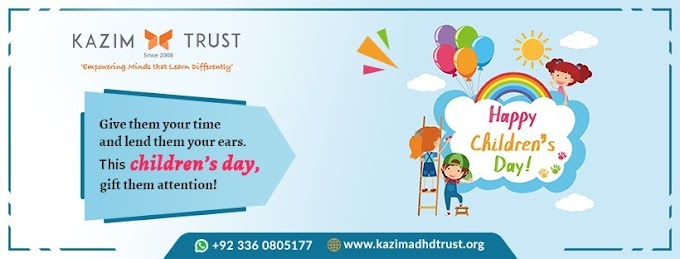Therefore, it is essential that the educators who work in a classroom realize how important it is to adapt strategies and the right classroom set-up for kids with ADHD. Educators ought to have the understanding to perceive the indications of the issue, comprehend normal behaviours, and have the option to make sensible changes to make the environment suitable for them to thrive, and benefit the young learners.
First of all, a teacher should accept the fact that a child with ADHD can be very demanding, especially on your time, energy and sense of capability. The persistent interruptions need for repeated instructions and close supervision can be strenuous.
A few things to remember for a teacher:
Children with ADHD are not only hyperactive or inattentive but they are also curious, imaginative and creative, energetic and active, entertaining and amusing. Unfortunately, they are often unaware of their behaviours, they are not trying to be disruptive deliberately. When they are made aware, they regret their behaviour but are unable to stop.
Children with ADHD do best when the teacher is flexible, follow clear routines, are reliable and provide a variety of activities. They make sure to maintain a positive teaching environment, recognise and support individuality and set firm limits on student behaviour.
Strategies for better teaching and learning
No doubt, it is challenging to find strategies that would enable you to teach the syllabus in a way that also contributes to dealing with the behaviours of the child with ADHD. Most likely, modifying the curriculum and the mode of delivery are common strategies. However, some hands-on teaching and learning approaches comprise of the following:
- Instructions, if clear and concise will boost their ability to comply.
- To engage students, asking questions is one of the best ways.
- The use of a computer helps to build interest, and maintain attention for a longer period.
- Tasks broken down into manageable chunks are easier to submit on regular basis but at intervals.
- Feedback is very important to give.
- Homework makes the child responsible
- Good planning and communication with parents can be very helpful.
Favourable physical environment
Children with ADHD function best under close monitoring and with the least distraction. The following strategies may be helpful:
To help keep the child on task, make sure to place them close to you. This can also develop your subtle interaction with the child.
The student with ADHD should be made to sit next to quiet and meticulous peers.
It is not ideal for children with ADHD to sit in large groups.
These children, since hyperactive tend to move around a lot, hence find it difficult to be seated any length of time.
Children with ADHD should be allowed for periods, provided they are not disturbing others.
It is best to display the classroom rules, assignment tasks, daily schedules or celebrate the achievements of students or appreciate their up-to-the-mark work. At Kazim Trust, trained and diligent therapists and teachers go the extra mile to provide a pleasing and encouraging environment for children with ADHD.
Children with ADHD should:
- Get extra time on assessments
- Be given clear instructions and assignments should be tailored
- Be given positive feedback and productive reinforcement
- Get a chance to enhance ICT skills
- Be allowed breaks in between time and chance to move around
- Be given extra assistance with staying organized
- Be given interesting and shorter assignments that are not too challenging but works well with them.
Kazim Trust knows how to give the best to such children. Our psychologists and well-trained educators put their heart and soul into planning lessons and executing them in the best possible manner so that the children with ADHD can thrive and learn in a healthy environment, and make a better future for themselves.




0 Comments